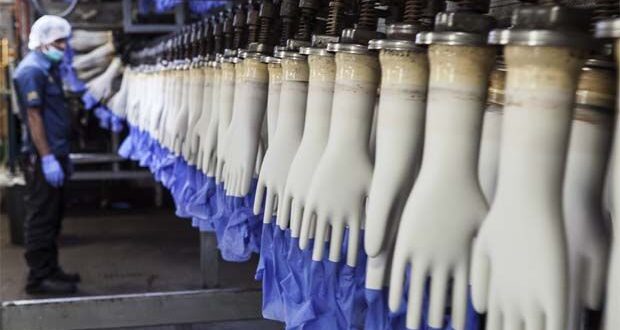KUALA LUMPUR: Kenanga Research is down on rubber glove players, a view it says was backed by recent profit announcements that pointed to an uneven recovery.
In its latest sector update, the research firm tallied a slew of problems besetting the industry, including continued weak demand for gloves, massive overcapacity and predatory pricing by certain overseas players.
Kenanga was generally downbeat over the financial reports of Malaysia’s glove companies in 4Q23.
Among the leading players, only Kossan Rubber Industries Bhd exceeded the research firm’s profit forecast, while Hartalega Holdings Bhd and Top Glove Corp Bhd came in line with projections and Supermax Bhd underperformed.
“Kossan’s and Harta’s 4QCY23 bottomline was lower quarter-on-quarter, dragged down by subdued sales volume and sustained high input nitrile butadiene rubber price.
“On the other hand, Supermax and Top Glove suffered their fifth and sixth consecutive quarterly losses, respectively, due to sale of high-priced inventory at falling market prices, subdued sales volume coupled with lower overhead absorption on the back of less-than-optimum utilisation rate,” it said.
Kenanga noted the road ahead will remain volatile due to weak demand on one hand and stubbornly high nitrile butadiene rubber prices on the other.
“The industry expects volatile quarterly sales orders as distributors and buyers see no urgency to place sizeable orders or hold substantial stocks as supply is plentiful and readily available.”
Glove producers will also be loathe to raise average selling prices given the still competitive landscape.
“With a low industry utilisation of about 40%, this is without a doubt still a buyer’s market.”
For 2024, the research firm expects demand for gloves to rise 30% to 390 billion pieces and resume its organic growth of 15% thereafter.
Going by these projections, there will be an excess capacity of 212 billion pieces in 2024, which means low prices and depressed plant utilisation will continue to plague the industry.
Kenanga expects the demand-supply situation to only start heading towards equilibrium in 2026. when there is virtually no more new capacity coming onstream while the global demand for gloves continues to rise by 15% per annum underpinned by rising hygiene awareness.
“Following a premature run-up in their share prices, we avoid all names under our coverage,” it said, while reiterating “underperform” on the sector.
 BeritaKini.biz Berita Viral Terkini di Malaysia
BeritaKini.biz Berita Viral Terkini di Malaysia





